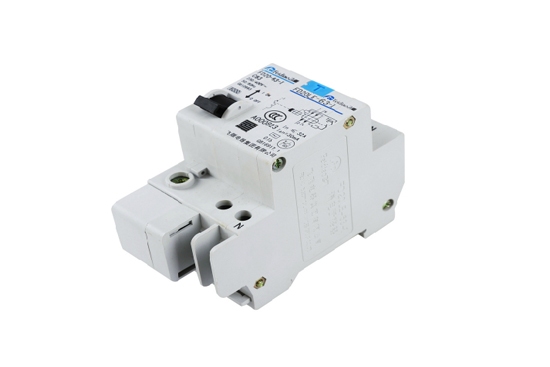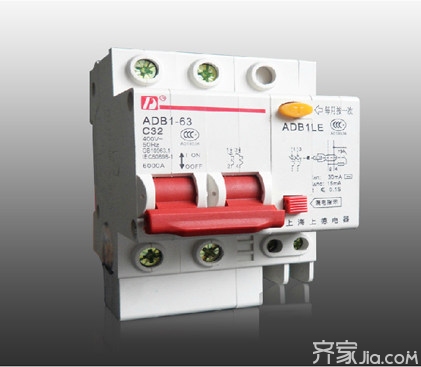In the use of household appliances, the prevention of electrical leakage is a matter of personal safety. Therefore, most homes will have a leakage protector installed. Understanding the principle of the leakage protector helps us to use it properly to protect our safety. Today Xiao Bian introduced the principle of leakage protector for everyone, let's understand it. Leakage current protector, referred to as leakage switch, also known as leakage circuit breaker, is mainly used to protect the life of the equipment when there is a leakage fault, and it has life-threatening and dangerous personal contact protection. It has overload and short circuit protection functions and can be used to protect the overload of the circuit or motor. With short circuit, it can also be used as the start of infrequent conversion of the line under normal conditions. The following small series will explain the principle of the leakage protector from the following two aspects. First, the working principle The residual current operated circuit breaker handle is turned to the ON position, and the movable contact is moved to the static contact by the mechanical mechanism and contacts with the static contact to connect the circuit. 1, when the line occurs "overload" failure, "overload current" so that "hot bimetal" heat bending and pushing "lever" makes the "mechanical locking mechanism" reset, "moving contact" quickly leave the "static contact", In order to achieve the function of breaking the line; 2. When a “short-circuit†fault occurs on the line, the “short-circuit current†causes the “instantaneous release†to act, and the plunger pushes the lever to reset the locking mechanism to achieve the breaking function; 3. When a “residual current†(leakage current) or “electric shock†fault occurs in the line, the signal output by the “zero sequence transformer†triggers the conduction of the thyristor, so that the residual current operated circuit breaker cuts off the power in a very short time. Realize the residual current protection function. Second, the principle of protection 1, overload protection (1) Protection element: hot bimetal. (As shown in the physical diagram of the miniature circuit breaker) (2) Thermal bimetal: A bimetal made of a composite material that deforms with temperature. The principle is: due to the different coefficient of thermal expansion of each component layer, when the temperature changes, the active layer with a higher coefficient of expansion (manganese nickel-copper alloy, nickel-chromium alloy, nickel-manganese alloy and nickel, etc.) deformation is greater than the expansion The deformation of the passive layer (made of nickel-iron alloy, etc.) having a lower coefficient of coefficient causes the entire bimetal strip to be bent toward the passive layer side, and the curvature of this composite material changes to cause deformation. (3) Protection principle: The thermal bimetallic strips are connected in series in the electrical circuit of the switch. When an overload fault occurs on the line, the overload current flowing through the bimetal will be converted into heat energy. The bimetal strip will deform and bend, and when bent to a certain degree At the time of setting (setting value), the bent bimetal pushes the "lever" to reset the "mechanical locking mechanism" and the "moving contact" quickly leaves the "static contact", thereby achieving the function of breaking the line and protecting the safety of the line and the equipment. And prevent electrical fires. 2, short circuit protection (1) Protection elements: Instantaneous release (electromagnetic release, electromagnet) (2) Instantaneous release: This is a release without human delay action. This type of transient overcurrent protection is usually able to remove short-circuit faults without selectivity. (3) Protection principle: The coil of the instant release is connected in series with the electrical circuit of the switch. When the line experiences a short circuit or a serious over-current, the over-current exceeds the instantaneous trip setting value, and the coil of the electromagnetic release device is large enough. The magnetic force overcomes the original spring force of the iron core and sucks the iron core. The iron core pushes the lever to reset the locking mechanism, realizes the breaking function, protects the safety of the circuit and the equipment and prevents the electric fire from occurring. Tips: More practical decoration knowledge, real scene with the shoot, please pay attention to the palm of this site (micro signal: mall_jia). Switch switch socket switch socket installation switch socket purchase
Steel Props
Steel prop is a vertical support system widely used in construction.
Based on different Markets with different types
There are two types with Light duty steel props and Heavy duty steel props
Characteristics:
Simple & flexible structure.
Easy for asembling
- Cup lock Scaffolding(C-Lock Scaffolding)
- Ring lock Scaffolding
-Kwistage Scaffolding
-H-frame Scaffolding
-ID15 Scaffolding Tower, this type Scaffolding is the most widely used in construction, such like bridge.
-Whole Aluminum Scaffolding
Steel Props,Stainless Steel Props,Mercury Stainless Steel Props,Adjustable Steel Props HENGSHUI PIONEER IMP & EXP TRADING CO ., LTD , https://www.hspioneer.com


